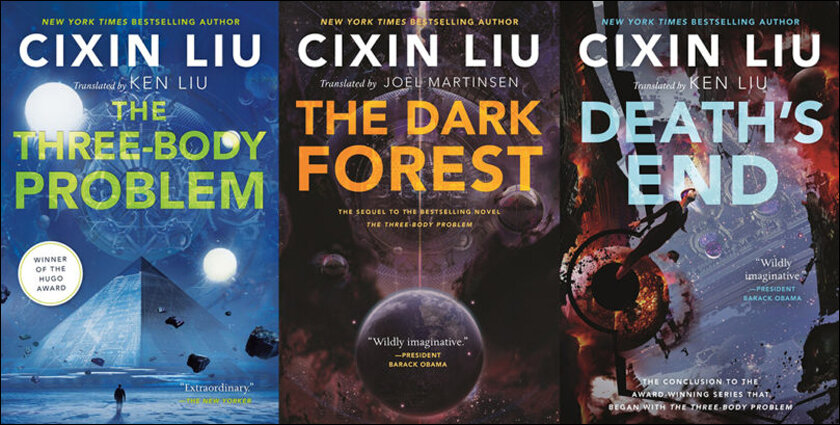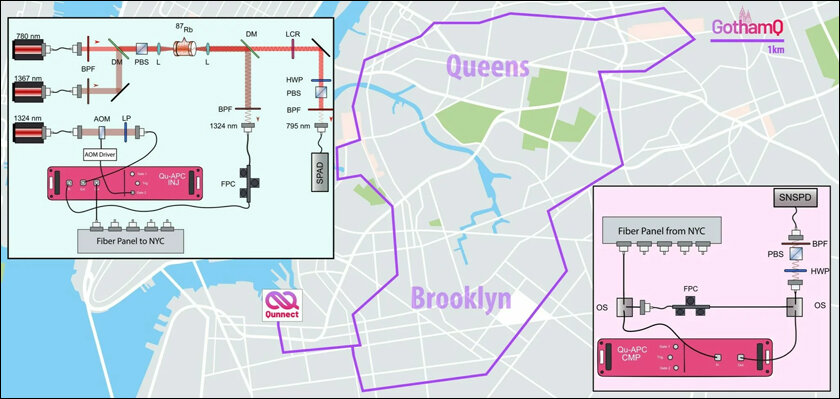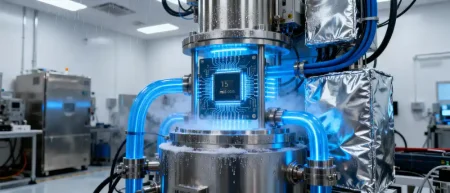Quantum computing, though in its infancy, threatens to change everything. Leading the research is a recent quantum communications experiment in New York that could change the world in our lifetimes, opines Satyen K. Bordoloi.
In the “Three-Body Problem” trilogy by sci-fi writer Liu Cixin, an alien species called Trisolarans have unlocked the secrets of quantum physics. As they journey to colonise us on an armada of ships to reach Earth 400 years later, they send two quantum photons packed in another dimension to keep Earth in check. These quantum particles create a near-instantaneous communication bridge between them and Earth, trillions of miles apart.

This is science fiction. But so was the press of a breast insignia connecting humans wirelessly to their spaceship in “Star Trek,” which came true less than a quarter-century after the show aired. Instantaneous communication across millions, perhaps billions, and even trillions of miles is the promise of the principle of quantum entanglement. To reach that stage, humanity must take hundreds of thousands of small steps. One such step—the one-small-step-for-man-giant-leap-for-mankind variety—was taken by researchers under the sleepless streets of New York City.
American company Qunnect, led by co-founder Mehdi Namazi, conducted a quantum internet infrastructure experiment underneath New York City for half a month. They sent entangled photons through 34 km of existing fibre infrastructure under the city, called GothamQ, and achieved high rates of transfer, high fidelity, and “15 days of continuous distribution, with a network uptime of 99.84%,” paving the way for what their research paper says is the “practical deployment of always-on entanglement-based networks with rates and fidelity adequate for many current and future use cases.”

The whole experiment and its parameters are fairly complicated, but to understand it in slightly less complicated terms, read this piece in Phys.org. Those working on or studying quantum communications can read the actual paper on the research titled “Automated Distribution of Polarization-Entangled Photons Over Deployed Optical Fibers,” in PRX Quantum. The rest of you, can read on for the simplest possible explanation I could muster, especially its implication and why I call this a step in changing the world.
What is Quantum Communication?:
Classical computers, which run your laptops and phones, use a binary system; bits, i.e., 0s and 1s. Quantum communication, meanwhile, is based on the principles of quantum mechanics. It uses the principles of quantum entanglement for communication using quantum bits or qubits, which can exist in multiple states simultaneously, thanks to a property called superposition. Additionally, qubits can be entangled, meaning the state of one qubit is directly related to the state of another, no matter the distance between them, or ‘spooky action at a distance,’ as Einstein called it.
Thus, by entangling two particles, the state of one instantly influences the state of the other, no matter how far apart they are. This could provide an unhackable and infinitely faster communication system. The problem is maintaining quantum entanglement over long distances, especially through fiber optic cables ubiquitous on land and under the sea.

The Quantum Breakthrough:
This research by Qunnect was intended to study exactly if this was possible. There were previous experiments, but the duration and distance were much smaller, and the network was in a controlled environment. For this experiment, the company developed a fully automated system that can maintain polarization entanglement between photon pairs, even when one photon travels through the complex and noisy environment of New York City’s optical fibres.
The experiment began with the generation of entangled photons using a process called spontaneous four-wave mixing in a warm rubidium vapor to generate pairs of polarization-entangled photons. In simple terms, they created pairs of light particles that are entangled with one another.
An automated system designed by them was meant to manage and maintain the entanglement. This system continuously monitors and adjusts the photons’ states to counteract any disturbances caused by the optical fibers. To test the system, they used a fiber optic infrastructure on a 34 km stretch under New York they called GothamQ. One photon from each entangled pair was sent through the optical fibers, while the other photon remained in a controlled environment. Despite the challenging conditions, the system successfully preserved the entanglement.

Why is This Important? – The Immediate View:
This breakthrough has several significant implications. First, the ability to maintain entanglement over long distances in real-world conditions means large-scale quantum networks can be built to run ultra-secure communication channels and distributed quantum computing. Secondly, this shows that one does not need to build extensive and expensive new infrastructure to enable quantum communication and that it can be integrated into the existing tech landscape. Thirdly, quantum communication carries the promise of unparalleled security. That’s because any attempt to interfere with it would disturb the entangled state, immediately alerting the sender and potentially even destroying the information packet.

Why is This Important? – The Larger Picture:
This experiment opens the world to a global quantum internet system connecting quantum computers and devices. If you know the potential of quantum computers, you are aware that this means computing exponentially faster than the current binary bits systems.
The quantum computers in existence, the most advanced being from IBM, have had to alternate between binary bits and quantum bits. Messages passed into the quantum computing system are sent using binary bits, and the results are translated into bits that our current systems understand. This experiment shows that end-to-end quantum computing systems can be built and deployed. This opens the world to a new computing system and portends the transformation of everything we know today.
To truly achieve the promise of everything quantum, we need a shift to everything that is quantum-based, which means even the network and software that transfer the results of quantum computing should be on devices and networks made and operated entirely for quantum systems and run on software and algorithms exclusively made for it. Such an end-to-end system using its own networks, is at least a decade away. However, this piggybacking on existing infrastructure, not in a binary bit mode but via qubits, is the first giant leap in this entirely new world that would be reshaped by quantum computing.

As more such experiments are conducted, newer systems, software, and equipment to run, meter, and manage quantum computing will emerge. Like the binary computing industry, a new quantum computing industry will come up, slowly and steadily upending everything binary in the world to an extent that I can predict—taking the rise of binary computing as a case study—that in 50 years, binary computers will have become so obsolete that you’ll look at them like you look at dot-matrix printers in the age of laser ones—necessary in certain cases, but slow, obnoxious, and obsolete in every other. Binary devices, one of which you’re using to read this, will at best trigger the curiosity of museum enthusiasts in the next half-century.
In Liu Cixin’s trilogy, the aliens arriving to colonize Earth try to use their quantum photons to stop humans from developing their knowledge in quantum physics. The fact that this bit of fiction has not turned into a qubit fact, unlike many others, should afford us peaceful sleep filled with dreams of quantum communication.
In case you missed:
- Quantum Internet Is Closer Than You Think, & It’s Using the Same Cables as Netflix
- Great quantum poker: Who’s bluffing, and who is holding the aces?
- Microsoft’s Quantum Chip Majorana 1: Marketing Hype or Leap Forward?
- Can AI Solve Quantum Physics?
- AI Taken for Granted: Has the World Reached the Point of AI Fatigue?
- The Great Data Famine: How AI Ate the Internet (And What’s Next)
- Why the Alleged, Upcoming AI Crash Is Never Going To Happen
- Project Stargate: Dubious Origins in the 1970s to AI Goldrush in 2025
- Alchemists’ Treasure: How to Make Gold in a Particle Accelerator (and Why You Can’t Sell It, Yet)
- Digital Siachen: How India’s Cyber Warriors Thwarted Pakistan’s 1.5 Million Cyber Onslaught










